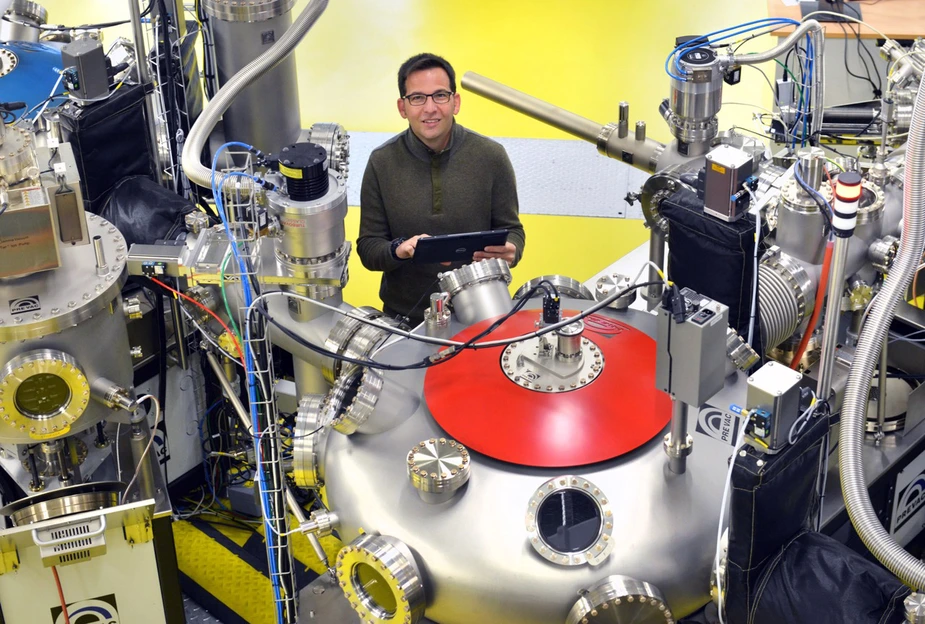Why Scientists X-ray Solar Cells
The electron storage ring BESSY II and the transition to clean energy
Researchers at the “EMIL” laboratory of the Helmholtz-Zentrum Berlin für Materialien und Energie GmbH explore possible components for the Energiewende – Germany’s transition to clean energy. One group exposes material interfaces to X-rays to better understand structures and make suggestions for their improvement.
Looking through the window of the meeting room, we see metal pipes and shiny structures shaped like cylinders and hemispheres. We are in a high-tech laboratory: four pipes channel the radiation into the laboratory from the Electron Storage Ring BESSY II of the Helmholtz-Zentrum Berlin für Materialien und Energie GmbH in Adlershof. The radiation’s spectrum ranges from the soft to the hard X-ray region. The HZB-staff of the “Energy Materials In-Situ Laboratory Berlin”, or EMIL, uses this X-ray radiation to examine the chemical and electronic structure of materials, for example, solar cells, which are pivotal to the transition to clean energy.
Professor Marcus Bär is an athletic researcher, who takes his bike to work a lot. He is the head of the Young Investigator Group “Interface Design”. Like most modern electronic components, he explains, solar cells are made up of countless, extremely thin layers of materials. “Each one has different chemical and electronic properties to fulfill various functions.” The interfaces of layers of materials are especially delicate: they can be subject to unwanted diffusion processes and electrical barriers.
In order to identify the structure of materials and interfaces, Bär’s team exposes them to soft – and - as of this year - also hard X-ray radiation. The resulting photons or electrons are detected. This “X-ray spectroscopic” analysis helps the team see what’s really going on inside the layer stacks.
Bär originally studied electrical engineering. He then went to the University of Nevada in Las Vegas, USA in 2005 following a doctorate at the Technical University Berlin. If the research conditions at HZB weren’t so uniquely favourable, he might still be overseas – or somewhere completely different, Bär tells us. The EMIL lab has a free subscription for extremely brilliant X-radiation from BESSY II and is ideally equipped in terms of instruments. “This also applies to synthesis of materials,” says Bär.
New research projects are not only initiated by Bär’s group but also together with partners who approach him with questions on materials. Regarding solar cells, they not only come from his colleagues at HZB, but also, for example, from the ZSW Center for Solar Energy and Hydrogen Research in Stuttgart and the Swiss Federal Laboratories for Materials Science and Technology. EMIL is also working on promising perovskite-based solar cells. “We are working in cooperation with researchers from Oxford University, who are leading experts in perovskites,” says Bär.
Six PhD students and four post-docs are currently on his team, who are helping to expand the examination of material interfaces to other materials systems. To obtain relevant measurements, some processes must be observed under real operating conditions. The magic word here is “operando spectroscopy”.
A different approach involves hydrogen as an energy carrier. Electrolysis of water requires efficient electrodes. Bär’s group will help find optimal catalysts as part of the Kopernikus project of the Federal Ministry of Education and Research.
The researchers at EMIL will not run out research questions anytime soon. EMIL will be open for projects of external partners from research and industry as of 2018.
By Sven Titz for Adlershof Journal
